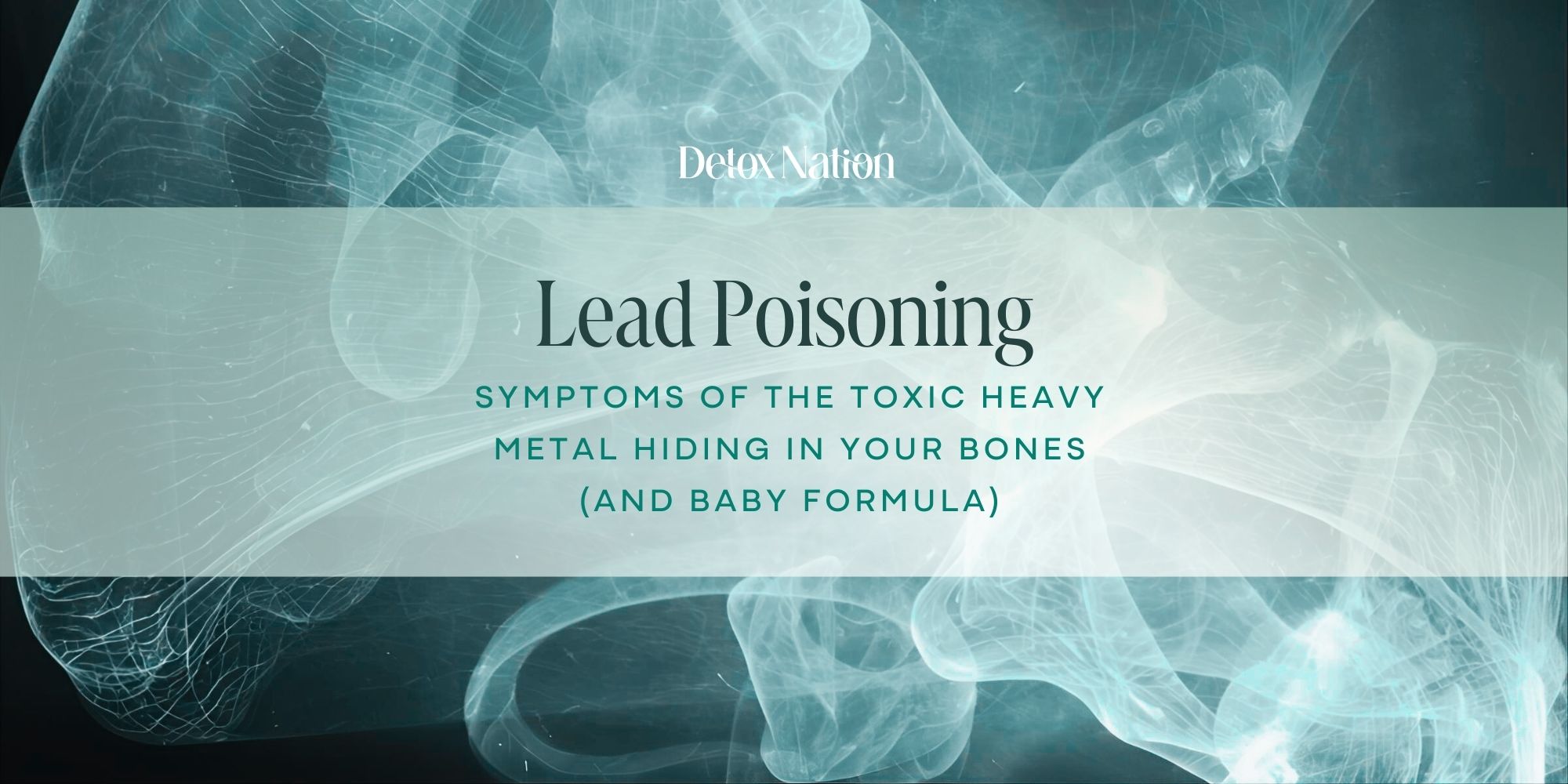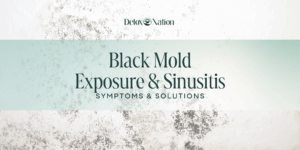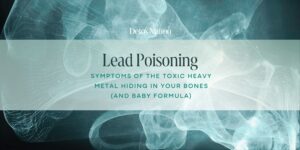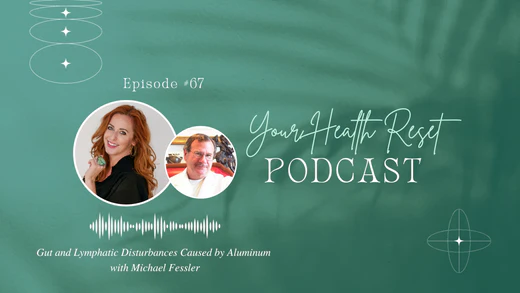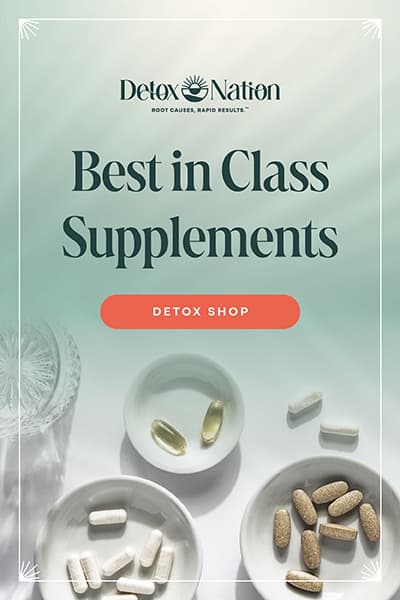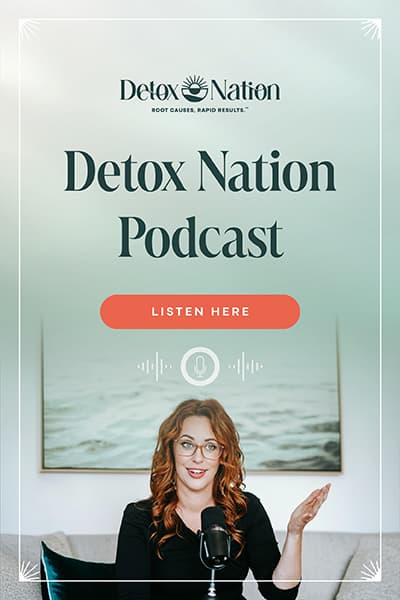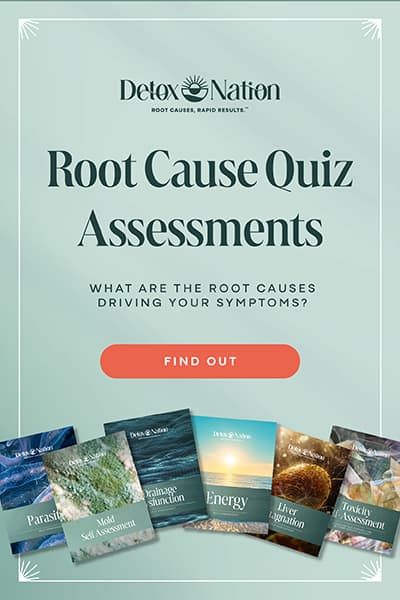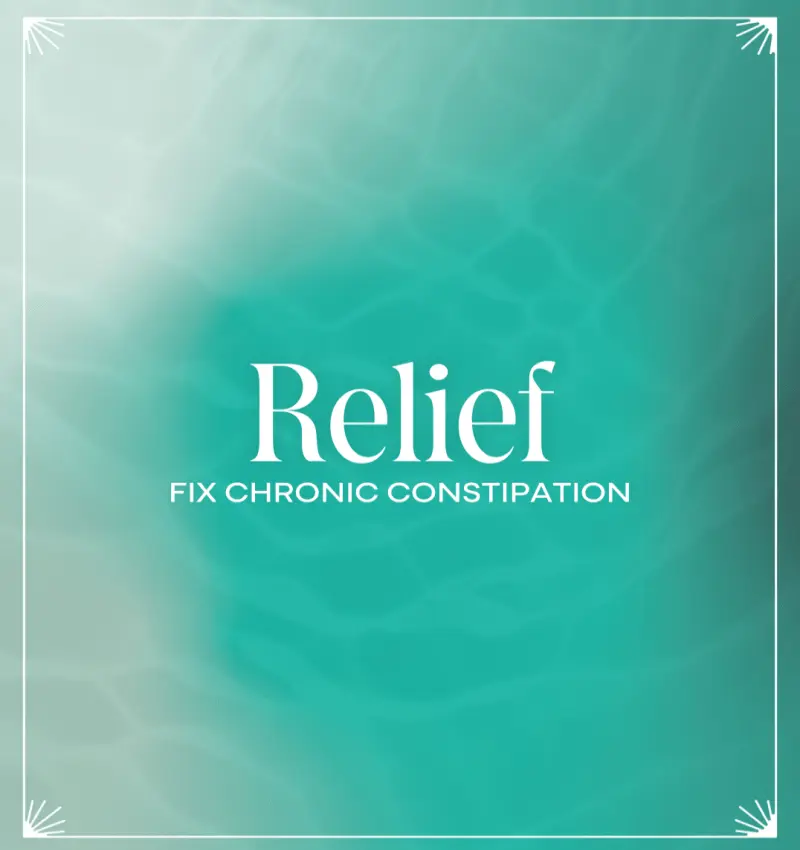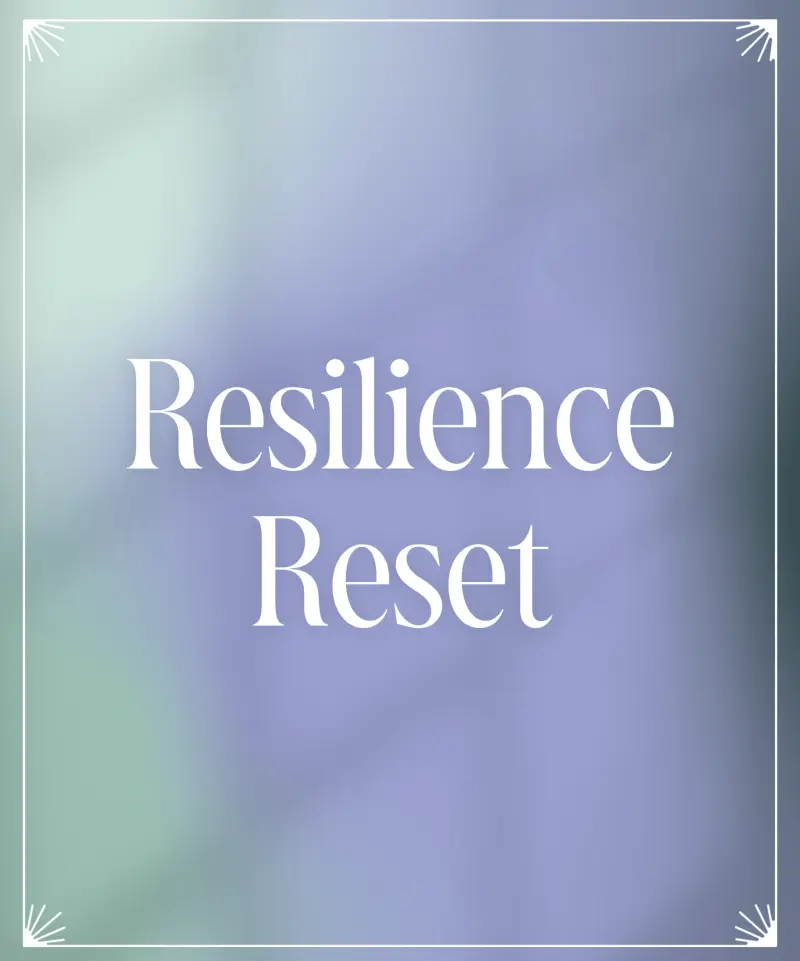Still think lead poisoning is a thing of the past? Lead exposure is alive and well—hiding in baby food, tap water, lipstick, and even mom’s bones. Know the common sources of lead poisoning before your “mystery symptoms” get mislabeled… again.
Unlike other toxins that the body can eliminate relatively quickly, lead loves to settle in for the long haul, primarily in your bones.
If you’ve been feeling foggy, fatigued, or not yourself in ways you can’t quite explain, it might be time to consider whether lead is overstaying its welcome in your body.
Maybe you’re not too sensitive. Maybe you’re too saturated.
Let’s dive into where lead is hiding, what it does to you, and how to (gently) kick it out.
Key Takeaways
- Lead exposure is still a daily reality, even in “clean” homes and organic foods.
- Symptoms of lead toxicity mimic other conditions and often get misdiagnosed.
- True lead detox is a long game, but it’s doable with the right strategy.

Interesting Facts About Lead
Unless you’ve been living under a rock your whole life you’ve likely heard that lead is a toxic heavy metal. But did you know any of these facts?
- Lead affects almost every organ in the body after exposure, but it loooves the nervous system the most (7).
- Lead impacts on DNA methylation are transgenerational, meaning it can be passed down to your children (7).
- Lead has been classified as a “possible human carcinogen” (7).
- Lead has no known biological function (9, 25).
- The half-life of lead in the blood is one month; the half-life of lead in the brain is two years (9).
- The chemical symbol of lead is Pb, from the Latin plumbum (10).
- Lead is one of the oldest metals, used by Egyptians in 4000 BC. Hippocrates was the first known person to link lead to adverse health effects in 370 BC (10).
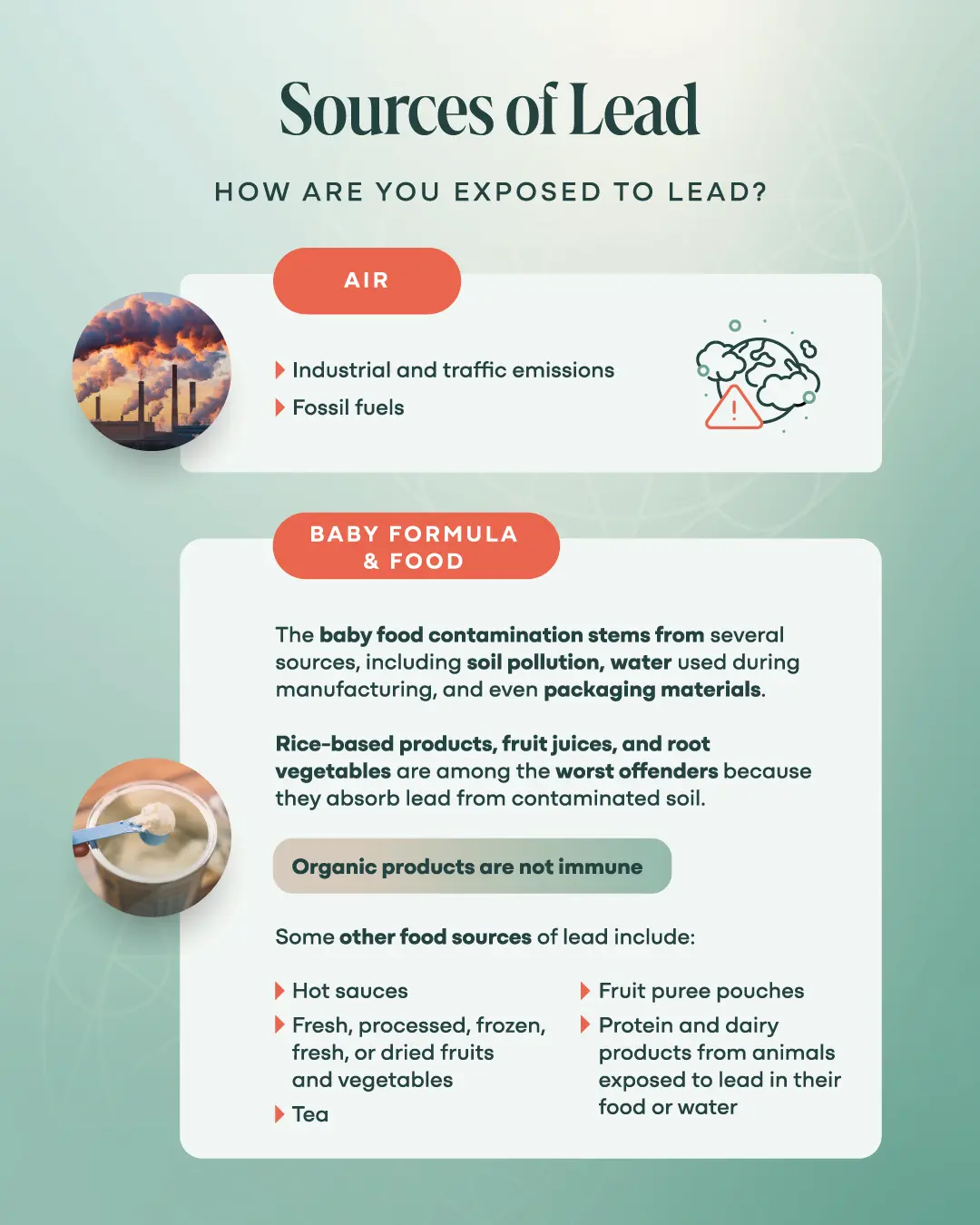
How Are You Exposed to Lead?
Many people assume lead poisoning is a thing of the past—until they realize they’ve been exposed for years without knowing it.
Lead contamination is far more widespread than most people think, hiding in everyday products, household items, and even the food we eat (17).
Understanding these exposure points is the first step in preventing further accumulation in your body.
Air
Lead is a common by-product of industrial and traffic emissions, and is found in mining sites, smelting sites, and anywhere that uses fossil fuels (4, 9, 10).
A 2024 study found the lead content of human blood decreased by 78% from 1978 to 1991, following the introduction of unleaded gas in the 1970s (10).
Once airborne, inhalation becomes a major route of exposure (4, 9).
Eventually, the particles settle to the ground and contaminate the soil (and then your food), groundwater, surface water, and more (9).
Baby Formula & Food
Recent studies have found shocking amounts of lead in commercial baby foods, including brands trusted by millions of parents (6).
A 2021 Congressional report revealed that major baby food brands, such as Gerber and Earth’s Best, contained dangerously high levels of lead and other heavy metals like arsenic and cadmium.
These findings are alarming because infants and toddlers are particularly vulnerable to lead poisoning due to their developing brains and nervous systems, as well as the fact that children absorb lead almost 50% faster than adults (10).
Compounding the problem, adults can excrete up to 99% of lead from their bodies, whereas children can only excrete 32% (10).
You read that right: Children absorb more and excrete less lead than adults.
The baby food contamination stems from several sources, including soil pollution, water used during manufacturing, and even packaging materials (6).
Rice-based products, fruit juices, and root vegetables are among the worst offenders because they absorb lead from contaminated soil.
What’s more, even organic products are not immune; while they may be free from pesticides and synthetic additives, they can still contain heavy metals absorbed from the environment.
Some other food sources of lead include:
- Hot sauces (2)
- Fresh, processed, frozen, or dried fruits and vegetables (4, 19)
- Tea (8)
- Fruit puree pouches (16)
- Protein and dairy products from animals exposed to lead in their food or water (4)
Water
Water contamination is another major source of lead exposure (4, 10).
Lead enters drinking water primarily through corroded lead pipes, plumbing fixtures, and old soldering materials, particularly in homes built before 1986 (3, 10).
(It also enters surface and ground water through precipitation from air emissions, as mentioned before.)
When water is acidic or remains stagnant in pipes for extended periods, it leaches lead into the supply, making it nearly impossible to detect without proper testing (3, 10).
Millions of people unknowingly drink lead-contaminated water every day.
While many assume that standard household water filters, like Brita, will remove lead, most common filtration systems are ineffective against heavy metals.
Instead, a high-quality water distillation system is necessary to ensure safe drinking water.
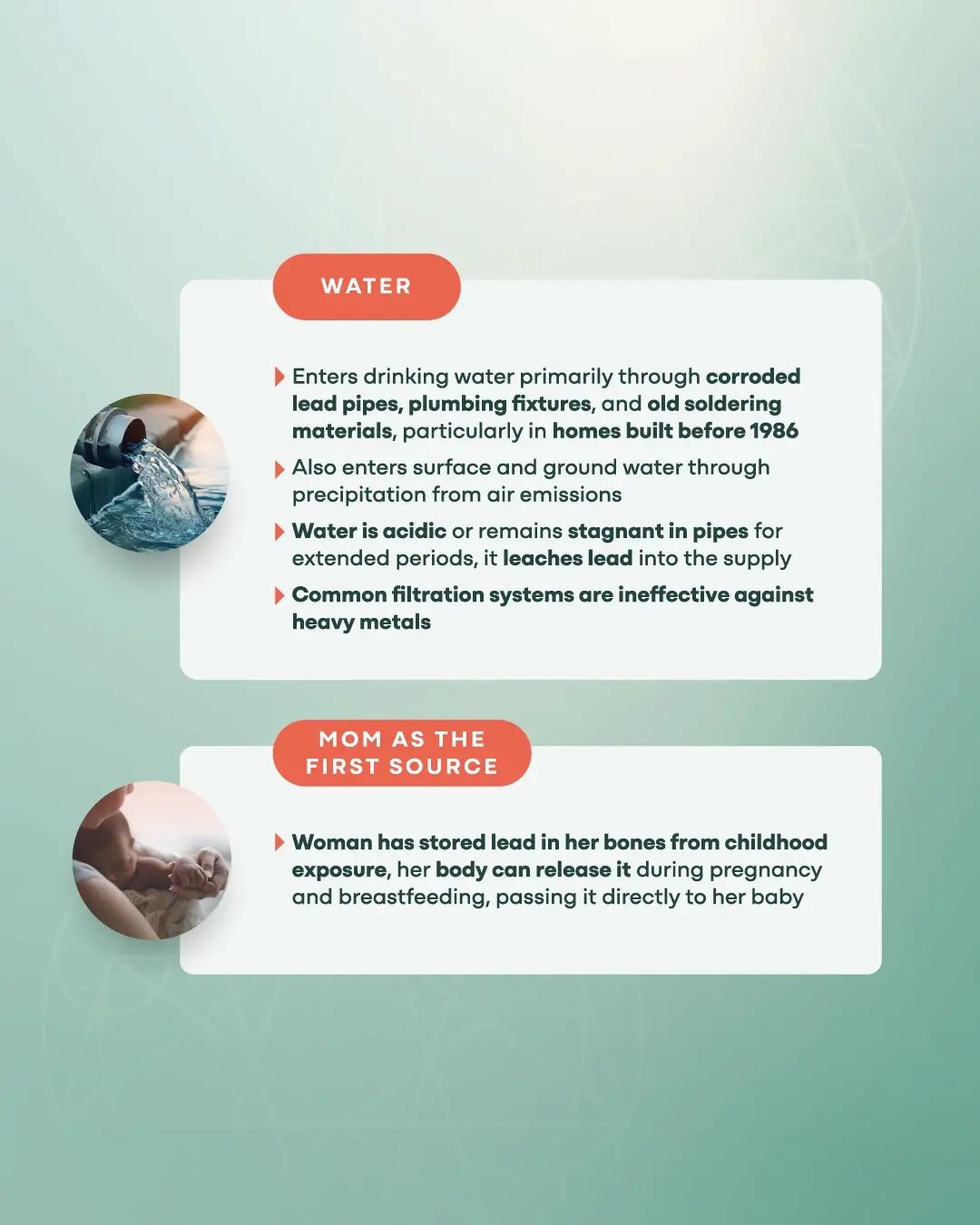
Mom as the First Source
Your first exposure to lead may have come from your own mother.
If a woman has stored lead in her bones from childhood exposure, her body can release it during pregnancy and breastfeeding, passing it directly to her baby (3, 18).
This is because the body prioritizes providing calcium to the growing fetus, and if the mother’s bones contain lead instead of pure calcium, that lead will be mobilized into the bloodstream (3).
And yes, lead can cross the placenta (3, 4).
Therefore, a child can be born with lead already circulating in their system before they ever encounter external sources, causing developmental, learning, and memory issues (3).
It’s a disturbing reality that underscores the importance of reducing lead exposure not just for children, but also for women of childbearing age.
Household Dust, Paint, and Soil
Many older homes still contain lead-based paint, even though its use was officially banned in residential properties in 1978.
If you live in a house built before then, chances are high that lead is present in the walls, windows, and baseboards.
The biggest risk comes not from intact lead paint, but from deteriorating surfaces where paint chips and dust can accumulate (10).
Simply opening and closing a lead-painted window can release tiny lead particles into the air, which settle into household dust and become an inhalation hazard.
In addition to indoor exposure, lead contamination is widespread in soil, especially near highways, industrial areas, and older buildings (10)
This contaminated soil can make its way into homes on shoes, clothing, and even through the air, where it accumulates on floors and furniture (10).
Children playing outside may also ingest lead-contaminated dirt, further increasing their exposure risk (9, 10).
Cosmetics & Personal Care Products
The beauty industry has a dirty secret—many of its products contain lead, and it’s not just the cheap brands.
A study by the FDA found lead in over 400 brands of lipstick, including well-known luxury names (20).
While the amounts in a single application may seem small, the problem is cumulative—if you’re applying lead-laced lipstick every day for years, you’re constantly introducing trace amounts of lead into your system (20).
Beyond lipstick, other cosmetics such as traditional kohl eyeliner, certain hair dyes, and some skin-lightening creams have been found to contain lead (13).
Unlike food and water, cosmetics aren’t ingested directly, but lead can still be absorbed through the skin and mucous membranes, making them a hidden but significant source of exposure.
Other Sources
Lead exposure isn’t limited to food, water, and cosmetics.
Many other everyday items pose a risk, including toys, imported ceramic dishes, cheaply made jewelry, and even some herbal supplements (10).
Imported ceramics and vintage dishes, especially those with brightly colored glazes, may contain lead that can leach into food and drinks.
Similarly, inexpensive jewelry, particularly those intended for children, has been found to contain dangerously high levels of lead, making it a serious hazard if accidentally ingested or chewed on.
Occupational exposure is another significant concern.
Construction workers, painters, mechanics, and people who work in industrial settings may encounter lead on a daily basis (4).
Without proper safety measures, they can bring lead dust home on their clothing, inadvertently exposing their families.
Still more sources of exposure include batteries, ammunition, smoking, and leaded glass (9, 25).
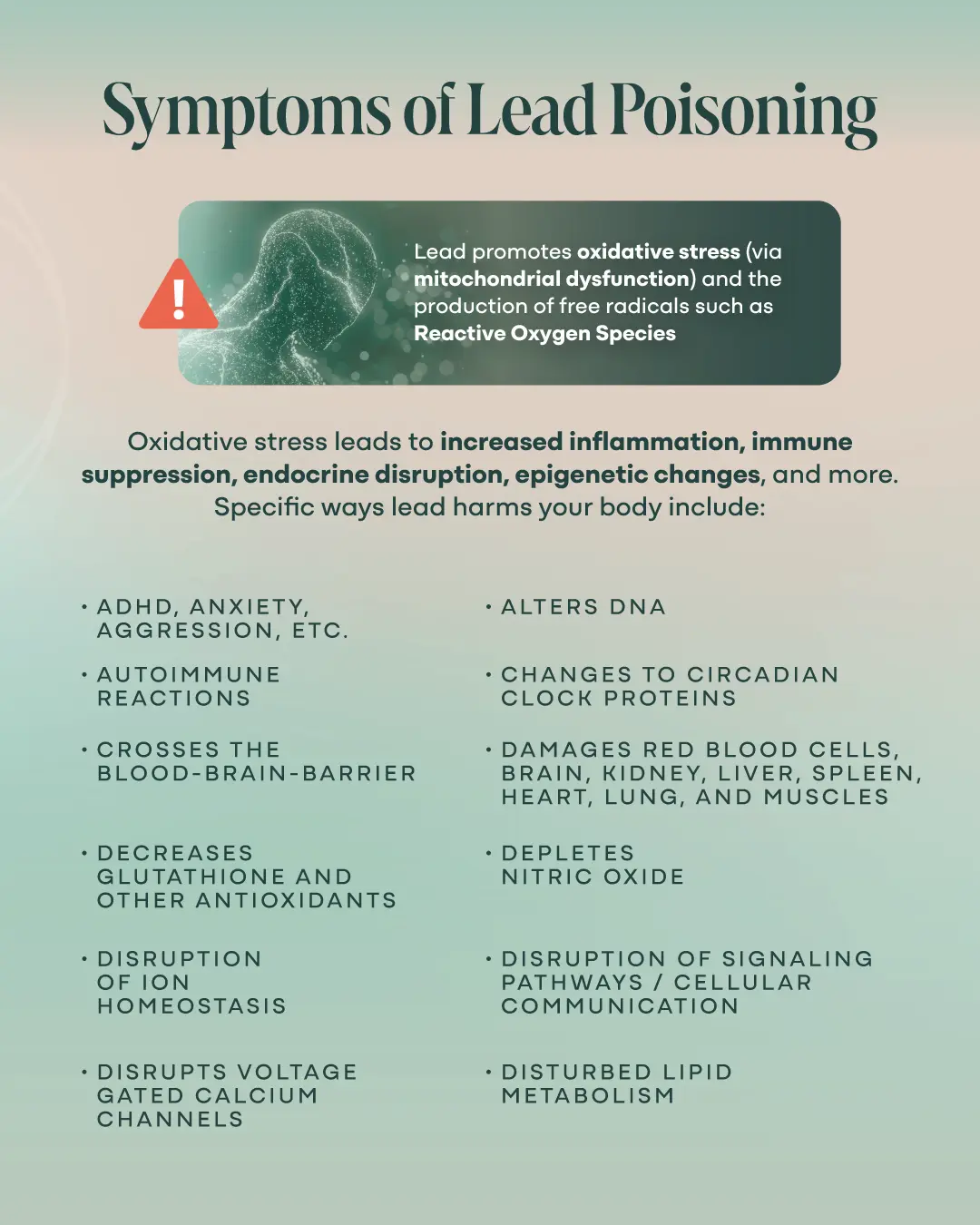
Symptoms and Health Effects of Lead Poisoning
Lead actively disrupts critical functions, throwing off everything from cognitive function to cardiovascular health (5, 7, 15, 17).
Unlike other toxins, which your body can eventually process and remove, lead is a long-term invader that is harmful at low concentrations (18).
It sneaks into your bloodstream, settles into your bones, teeth, liver, and kidneys, mimics essential minerals, and slowly chips away at your health (7, 9).
Lead promotes oxidative stress (via mitochondrial dysfunction) and the production of free radicals such as Reactive Oxygen Species (5, 7, 9, 11, 17, 21, 22, 24).
Oxidative stress leads to increased inflammation, immune suppression, endocrine disruption, epigenetic changes, and more (5, 7, 11, 17, 21, 24). Some of the specific ways lead harms your body include:
- ADHD, anxiety, aggression, etc. (3, 13)
- Alters DNA (3)
- Autoimmune reactions (7)
- Changes to circadian clock proteins (23)
- Crosses the blood-brain-barrier (9)
- Damages red blood cells, brain, kidney, liver, spleen, heart, lung, and muscles (7)
- Decreases glutathione and other antioxidants (9, 22)
- Depletes nitric oxide (9)
- Disruption of ion homeostasis (17)
- Disruption of signaling pathways / cellular communication (9, 15, 22)
- Disrupts Voltage Gated Calcium Channels (9)
- Disturbed lipid metabolism (21)
- Endothelial dysfunction (7, 17)
- High blood pressure and cardiovascular disease (3, 7, 9, 13, 17, 21, 25)
- Immune suppression (7, 24, 25)
- Impaired stem cell differentiation (11)
- Impaired vision – glaucoma, macular degeneration, cataracts, night blindness, etc. (4)
- Impairs membrane structures (7)
- Kidney damage (1, 9, 23, 25)
- Mitochondrial dysfunction (9)
- Neurological dysfunction and degeneration (3, 7, 9, 13, 15, 23)
- Possible carcinogen (4, 9, 23)
- Replaces essential elements like calcium, copper and iron (9)
- Reproductive damage (5, 7, 9, 22)
- Results in the formation of peroxynitrite, a potent oxidant (9)
- Spontaneous abortions, preterm births, and low birth weight (3, 9)
Still Feeling Stuck, Even While Doing "All the Right Things"?
Take our Toxicity Self-Assessment to uncover the root causes behind your symptoms—so you can stop chasing surface-level fixes.
Take the Toxicity AssessmentBecause lead exposure often builds up over time, symptoms can be subtle at first, making it difficult to connect the dots.
Many people don’t realize they have lead toxicity until they’ve been struggling with unexplained fatigue, memory problems, or chronic symptoms for years.
Symptoms of Lead Poisoning
One of the trickiest things about lead poisoning is that its symptoms can easily be mistaken for other health conditions.
Doctors might misdiagnose you with anemia, chronic fatigue syndrome, or early-onset cognitive decline without ever considering heavy metals as the root cause.
If you’ve been battling symptoms like headaches, dizziness, and exhaustion that don’t seem to improve no matter what you try, lead might be playing a bigger role in your health than you think (9, 23).

Brain Fog & Memory Loss
Ever walk into a room and forget why?
Struggle to recall names or words that used to come easily?
Chronic lead exposure is known to impair cognitive function, causing brain fog, memory problems, and mental sluggishness (4, 9).
Lead is a known neurotoxin and interferes with neurotransmitter function, reducing the brain’s ability to send clear signals (3, 7).
Over time, this can accelerate neuroinflammation and brain aging, leading to cognitive decline, difficulty concentrating, and even an increased risk of neurodegenerative diseases like Alzheimer’s and Parkinson’s (7, 13, 15).
Fatigue That Won’t Quit
If your energy levels are in the gutter and no amount of coffee or rest seems to fix it, lead might be draining your vitality.
Lead toxicity disrupts mitochondrial function—the tiny energy factories inside your cells (9).
Without efficient mitochondria, your body struggles to produce ATP (cellular energy), leaving you exhausted no matter how much you sleep (9).
And did I mention that your sleep can also be disrupted (23)?
Chronic exposure can cause anemia, further reducing oxygen supply to your tissues and making you feel sluggish, weak, and constantly drained (7).
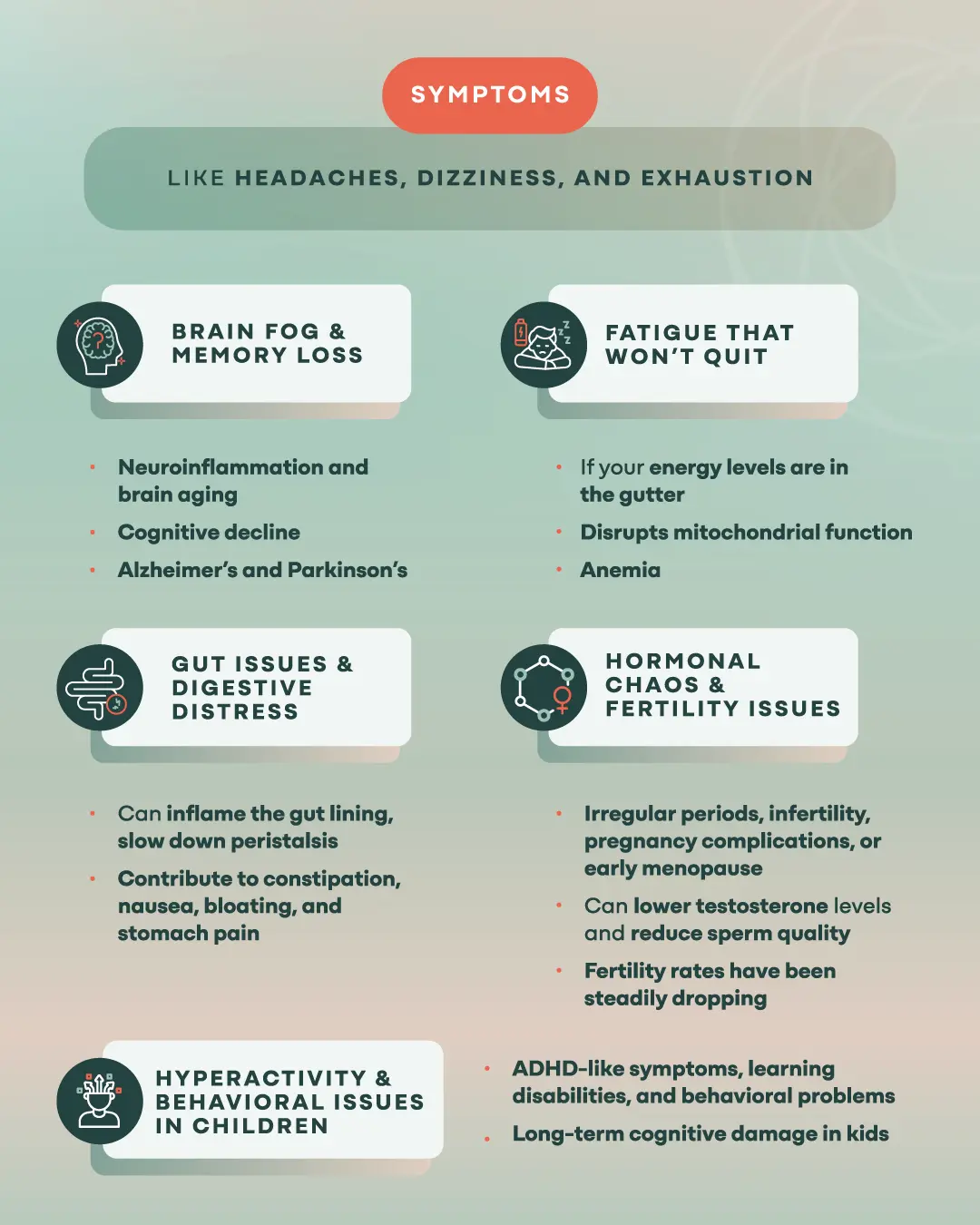
Gut Issues & Digestive Distress
Lead affects your digestion, too.
It can inflame the gut lining, slow down peristalsis (the muscle contractions that move food through your digestive tract), and contribute to constipation, nausea, bloating, and stomach pain (9).
Some people develop chronic gut issues that don’t respond to probiotics or dietary changes, because the real problem is lead poisoning disrupting gut motility and microbiome balance.
Hormonal Chaos & Fertility Issues
Your endocrine system is extremely sensitive to toxins, and lead is a major disruptor (5).
Women with high lead levels often experience irregular periods, infertility, pregnancy complications, or early menopause (3, 9, 22).
In men, lead can lower testosterone levels and reduce sperm quality, making it harder to conceive (9).
It’s no coincidence that as heavy metal exposure has increased in modern times, fertility rates have been steadily dropping.
Hyperactivity & Behavioral Issues in Children
Children are particularly vulnerable to lead exposure, and their developing brains suffer the consequences (3, 7, 9, 10, 13, 18, 20.)
Studies have linked lead toxicity to ADHD-like symptoms, learning disabilities, and behavioral problems (3, 13).
In fact, many children diagnosed with hyperactivity or attention disorders might actually be dealing with undetected lead poisoning.
The worst part?
Even low levels of exposure can cause long-term cognitive damage in kids (3, 7, 9, 10, 13, 18, 20.)
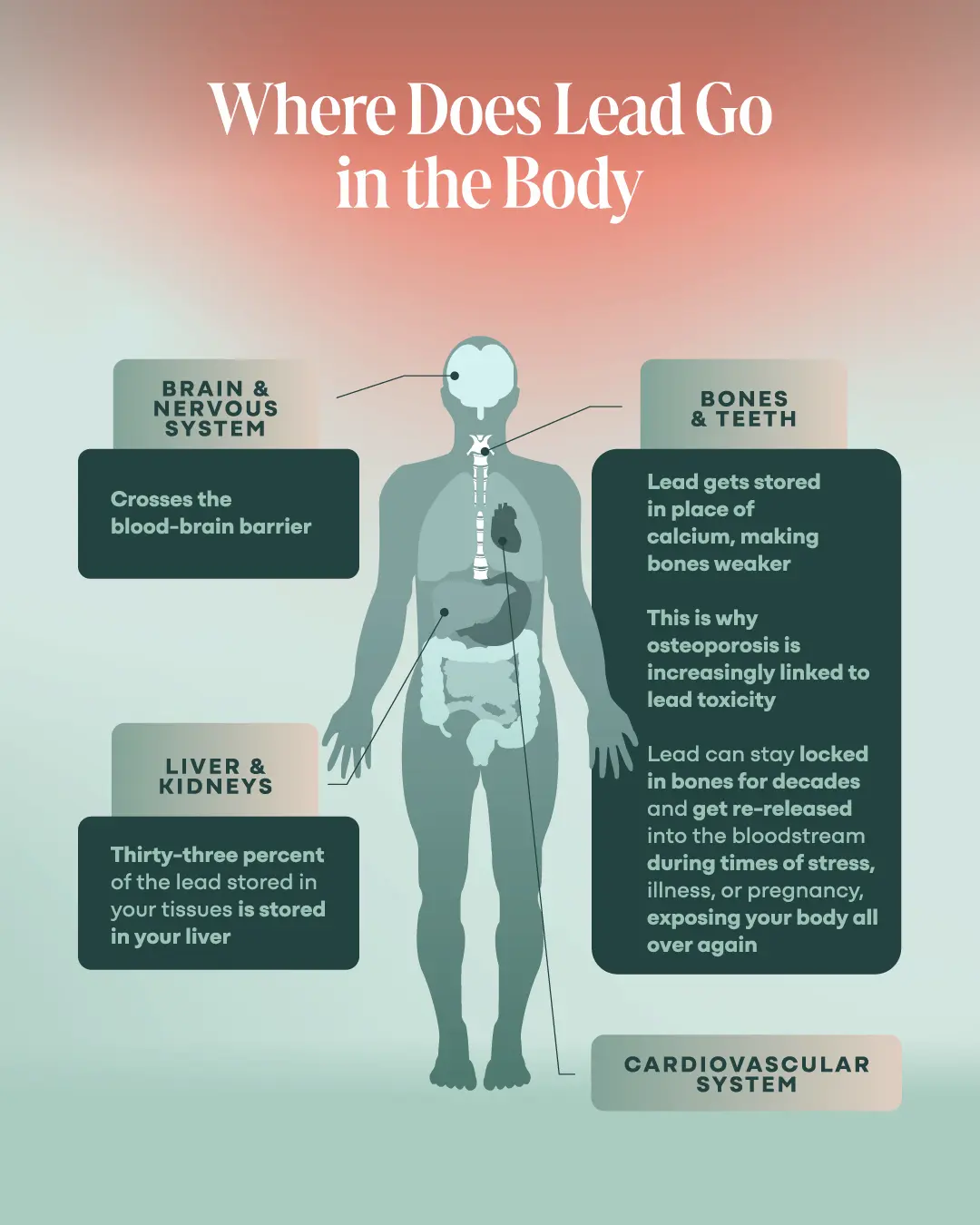
Where Does Lead Go in the Body?
Once lead enters your system, your body doesn’t know how to get rid of it efficiently, so it gets stored in tissues and organs, where it continues to wreak havoc.
Brain & Nervous System
Lead loves the brain (7, 9).
It crosses the blood-brain barrier, disrupts neurotransmitter function, and interferes with neuron development (3, 7, 9, 13, 15, 23).
This is why lead poisoning is linked to mood disorders like anxiety, depression, and irritability (3, 13).
Even mild exposure can cause changes in behavior, making people feel more aggressive, anxious, or emotionally unstable (3, 13).
Bones & Teeth
One of lead’s favorite hiding spots is your bones (7, 9).
Instead of being eliminated, lead gets stored in place of calcium, making bones weaker over time (9).
This is why osteoporosis is increasingly linked to lead toxicity.
To add insult to injury?
Lead can stay locked in bones for decades and get re-released into the bloodstream during times of stress, illness, or pregnancy, exposing your body all over again (9).
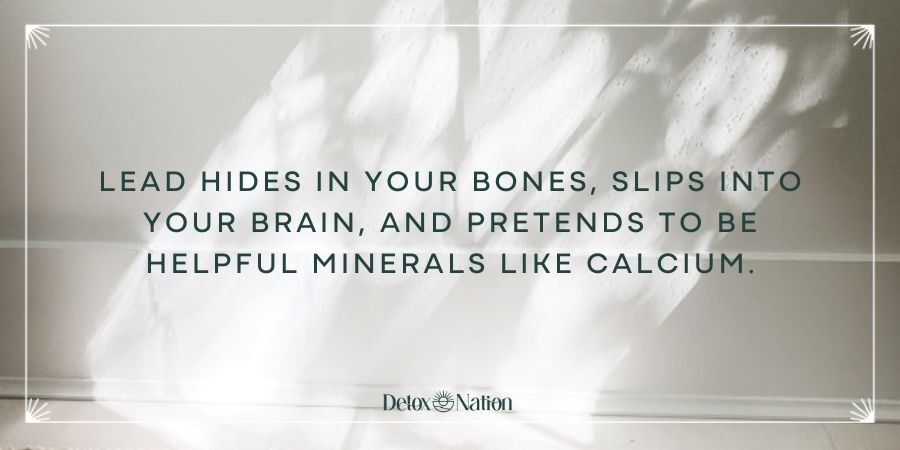
Liver & Kidneys
Your liver and kidneys work hard to filter out toxins, but lead puts extra strain on these organs (7, 9).
Thirty-three percent of the lead stored in your tissues is stored in your liver, creating allll kinds of obstacles for efficient detoxification (9).
The kidneys, which are responsible for eliminating heavy metals through urine, also take a major hit (1, 9, 23, 25).
Chronic lead exposure has been linked to kidney disease, and people with compromised kidney function struggle even more to get rid of stored lead (1, 9, 23, 25).
Cardiovascular System
Lead is a hidden contributor to high blood pressure and heart disease (3, 7, 9, 13, 17, 21, 25).
It damages blood vessels, increases arterial stiffness, and contributes to chronic inflammation—setting the stage for cardiovascular problems (3, 7, 9, 13, 17, 21, 25).
If you have high blood pressure that doesn’t respond to diet and lifestyle changes, consider checking your lead levels.
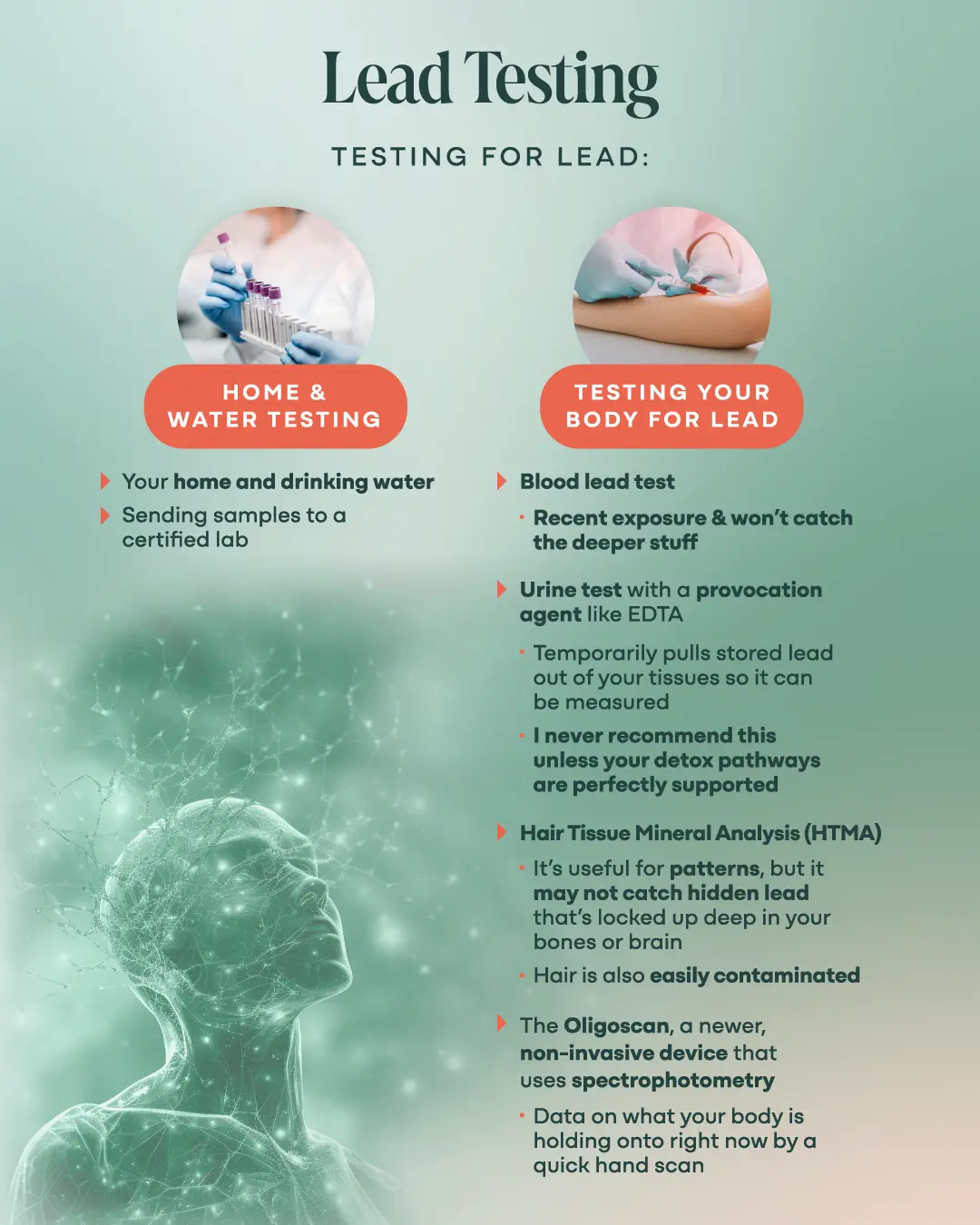
Testing for Lead: Are You Actually Toxic?
Not all tests are created equal when it comes to detecting lead toxicity. Because lead gets stored deep in the body, some tests only reveal recent exposure, while others provide a more comprehensive picture.
Home & Water Testing
If you suspect lead exposure, start by testing your environment.
Lead in your home and drinking water is a major source of exposure, and identifying it early can prevent further contamination.
Professional water testing kits can detect lead in pipes, while home test kits can check for lead dust in paint and soil.
Sending samples to a certified lab provides the most accurate results.

Testing Your Body for Lead
There are a few ways to test for lead in the body, but each one tells a slightly different story.
A blood lead test can show recent exposure, like if you’ve been around fresh paint dust or contaminated water—but it won’t catch the deeper stuff.
That’s because lead doesn’t hang out in the bloodstream for long; your body stores it in bones, tissues, and organs, where a standard blood test can’t reach.
If you want to see what’s lurking below the surface, a urine test with a provocation agent like EDTA can help.
This temporarily pulls stored lead out of your tissues so it can be measured—but I never recommend this unless your detox pathways are perfectly supported.
Another option is Hair Tissue Mineral Analysis (HTMA), which gives a broader view of long-term exposure by looking at mineral ratios and heavy metals excreted through the hair.
It’s useful for patterns, but it may not catch hidden lead that’s locked up deep in your bones or brain.
Hair is also easily contaminated by shampoo, conditioner, styling products, dyes, and more.
And then there’s the Oligoscan, a newer, non-invasive device that uses spectrophotometry to measure heavy metal levels in your tissues in real time (26).
No needles, no collection cups—just data on what your body is holding onto right now by a quick hand scan.
Each method has its pros and cons, but together, they can help map out the full picture of your toxic burden.
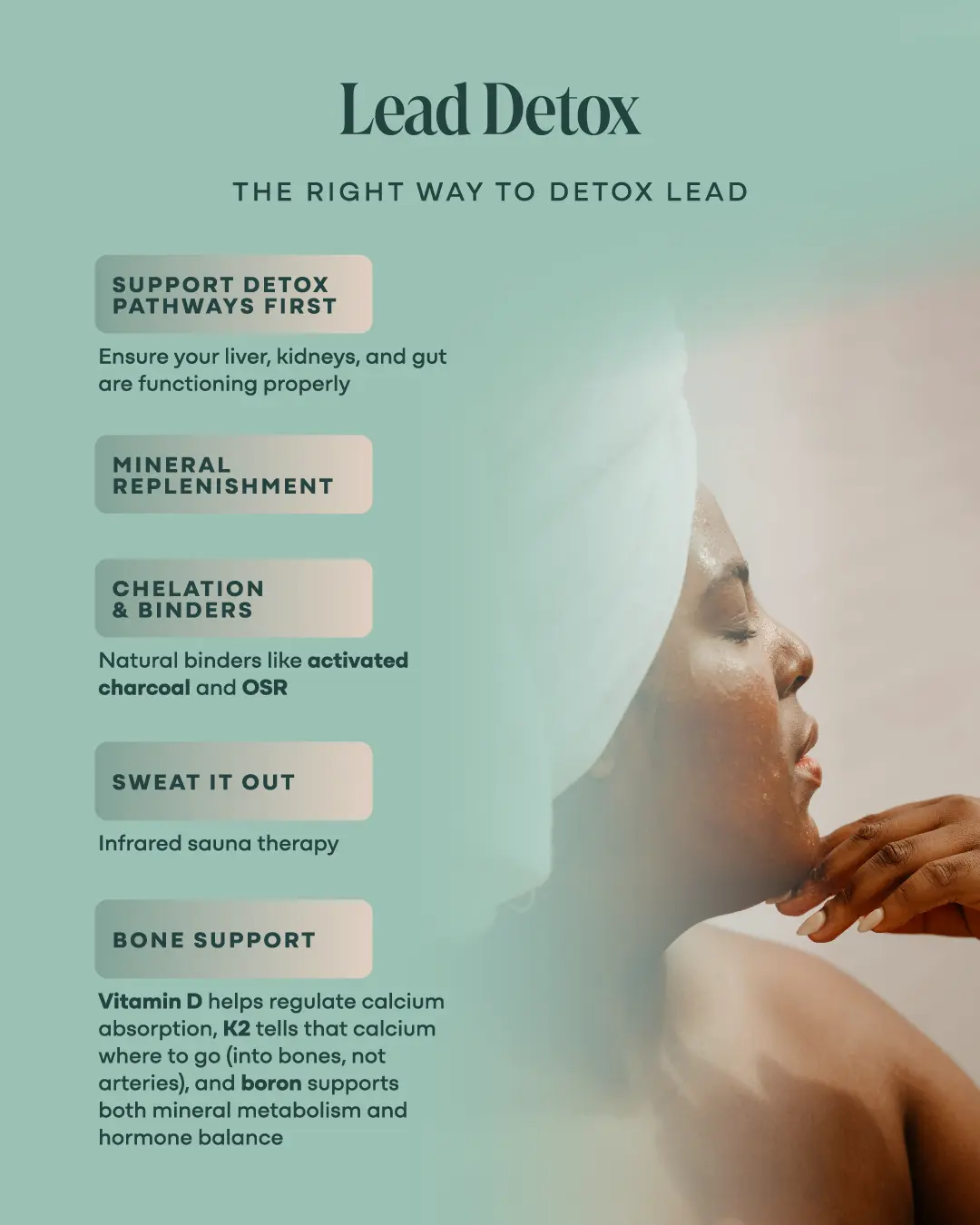
Why Lead Detox Is So Tricky (and How to Do It Right)
Lead is the slowest heavy metal to detox, which means getting it out of your body is a long-term commitment.
The Wrong Way to Detox
Many people make the mistake of trying to detox too aggressively, which can flood the bloodstream with toxins faster than the body can eliminate them.
Without proper mineral support, lead can get reabsorbed instead of eliminated, making symptoms worse.
The Right Way to Detox Lead
- Support detox pathways first: Before mobilizing lead, ensure your liver, kidneys, and gut are functioning properly. Lead primarily leaves the body through urine and stool. If you’re constipated, your body will reabsorb toxins instead of eliminating them.
- Mineral replenishment: Lead mimics calcium, magnesium, and zinc—so flooding your body with these essential minerals can help push it out.
- Chelation & binders: Natural binders like activated charcoal and bentonite clay help escort lead out of the body safely.
- Sweat it out: Infrared sauna therapy is a great way to mobilize and excrete heavy metals through sweat.
- Bone support: Lead weakens bones by replacing calcium, making detox essential for preventing fractures later in life.
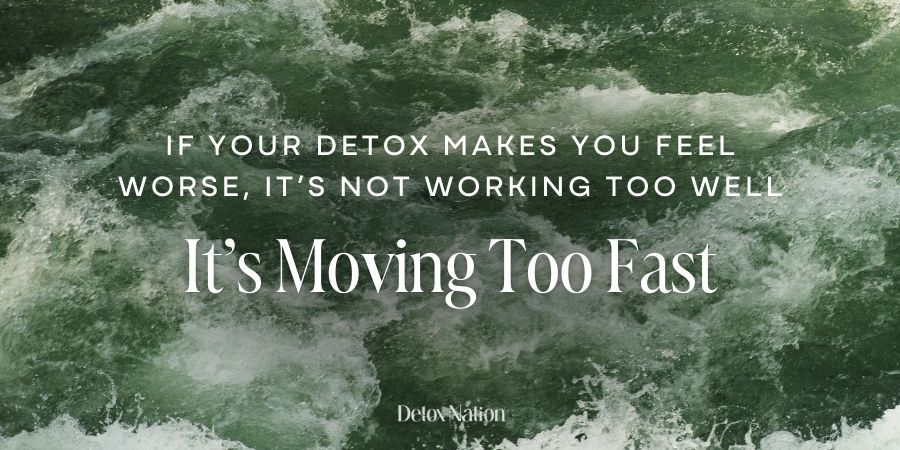
Preventing Osteoporosis
Vitamin D, K2, and boron play a crucial, often-overlooked role in lead detox and bone repair. Vitamin D helps regulate calcium absorption, K2 tells that calcium where to go (into bones, not arteries), and boron supports both mineral metabolism and hormone balance—key for pulling lead out and rebuilding strong, healthy bone.
Without this trio, your body has a much harder time kicking out stored lead, and detox efforts can backfire by weakening your bones even further. This isn’t just about getting toxins out—it’s about making sure what replaces them restores your health.
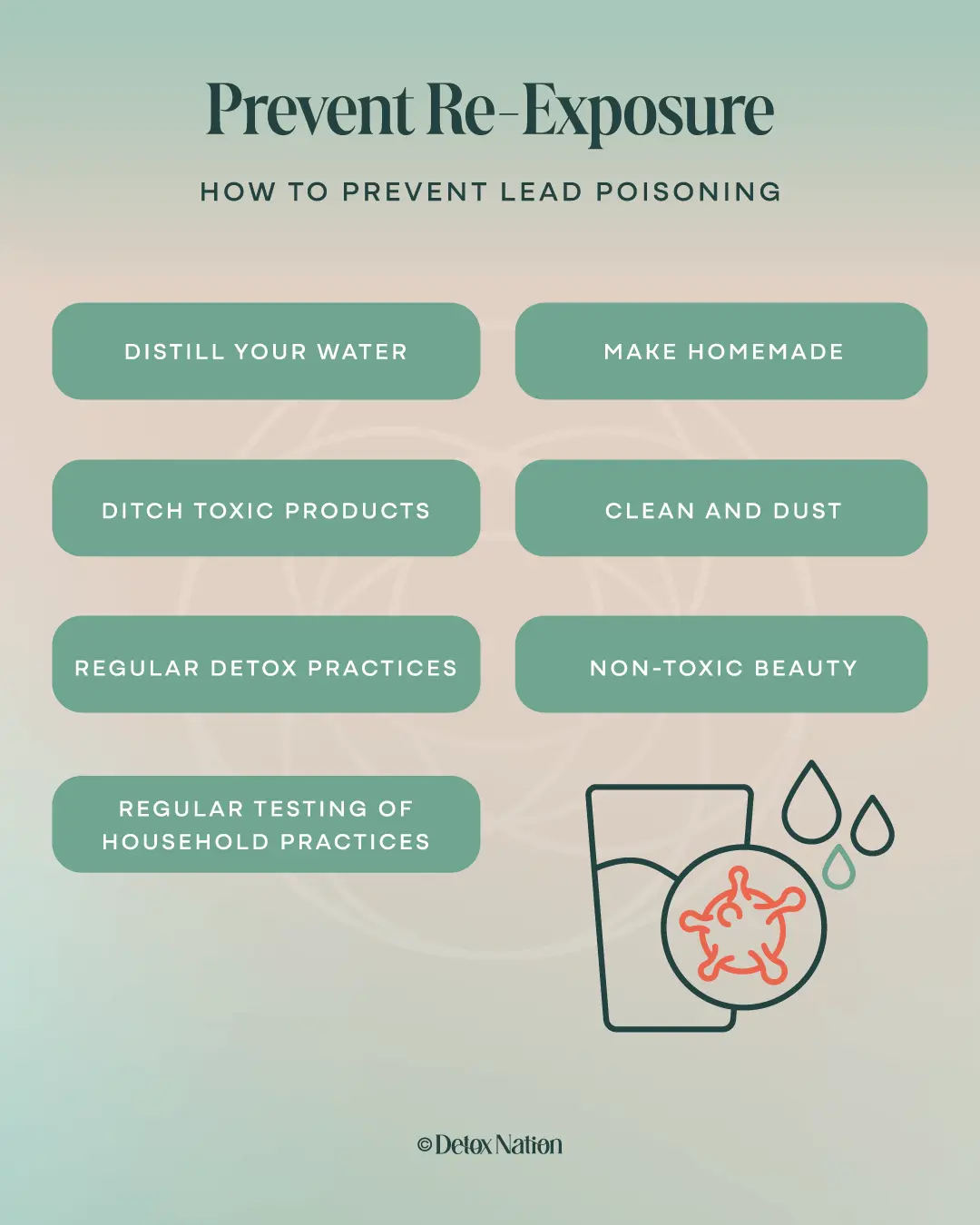
The Long Game: How to Prevent Lead Poisoning
Even after detoxing, preventing re-exposure is key. Here are a few tips to get you started!
- Distill your water: Invest in a high-quality water distiller.
- Ditch toxic products: Switch to safer cosmetics, cookware, and household items.
- Regular detox practices: Maintain ongoing detox habits like binders, sauna therapy, and mineral supplementation.
- Regular testing of household water supplies is crucial, particularly for families with young children, as even small amounts of lead exposure can cause long-term health damage.
- Make homemade: Parents who rely on store-bought baby food should be especially cautious and consider making homemade alternatives using ingredients sourced from trusted, low-contaminant areas.
- Clean and dust: Regular cleaning with a damp cloth, using HEPA-filter vacuums, and taking off shoes before entering the house can all help reduce exposure.
- Non-toxic beauty: Opting for truly clean, independently tested beauty to minimize risk.
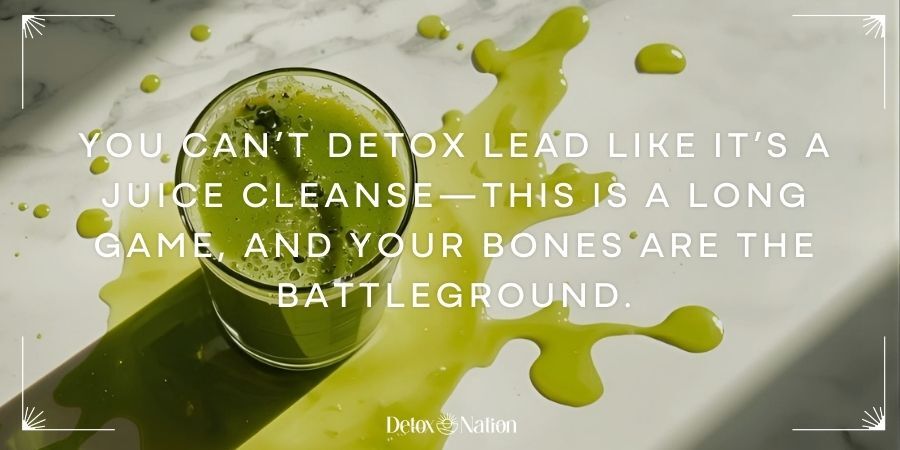
You’ve Got This (Even If Lead Thinks It’s Staying Forever)
If you’ve been addressing symptoms like fatigue, brain fog, gut issues, or hormone chaos without seeing real progress, it may not be because you’re doing something wrong—it may be because something deeper is driving the dysfunction.
Lead is a long-game disruptor.
It hides in your bones, slips into your brain, messes with your mitochondria, and pretends to be helpful minerals like calcium.
Meanwhile, you’re left wondering why your detox protocols make you feel worse, your labs look “normal,” and your supplements seem to hit a wall.
Take our toxicity self-assessment today to understand more about your symptoms and their root causes.
Once you understand how lead operates—and how your body gets rid of it—you can stop chasing surface-level fixes.
You can start working with your biology instead of throwing random protocols at it.
Detoxing lead isn’t fast, but it is possible.
It requires strategy, patience, and a deep respect for how your body heals when you give it the right conditions.
Start there.
Still Feeling Stuck, Even While Doing "All the Right Things"?
Take our Toxicity Self-Assessment to uncover the root causes behind your symptoms—so you can stop chasing surface-level fixes.
Take the Toxicity AssessmentFAQ: Quick Answers to Common Lead Questions
Q: What foods contain lead?
A: Rice, root vegetables, and processed baby food are common sources.
Q: Where is lead found most often?
A: Water, soil, old paint, cosmetics, and household dust.
Q: What are symptoms of lead poisoning?
A: Brain fog, fatigue, gut issues, high blood pressure, and infertility.
Q: How do I start detoxing safely?
A: Start with mineral support, binders, and a solid gut health protocol.

